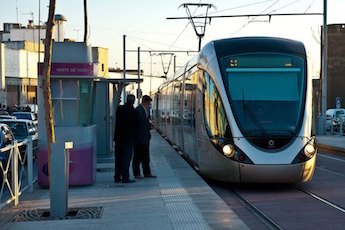Water and Urbanization
Safe drinking water systems and adequate sanitation that effectively disposes of human waste will be essential to ensure cities and towns grow sustainably. Extending these services to the millions of urbanites currently unserved will play a key role in underpinning the health and security of cities, protecting economies and ecosystems and minimising the risk of pandemics.

A view of passengers aboard trains connecting the suburbs of Kolkata, India. The Asia-Pacific region is urbanizing rapidly with 1.77 billion people, 43% of the region's population, living in urban areas. UN Photo/Kibae Park
Challenges
For the first time in history, more than half of the global population live in towns and cities. By 2050, that proportion is expected to rise to two-thirds. Population growth is happening fastest in urban areas of less developed regions, with the urban population estimated to grow from 3.9 billion people today to 6.3 billion in 2050.Even though water and sanitation access rates are generally higher in urban areas than rural, planning and infrastructure have been unable to keep pace in many regions. Today, 700 million urbanites live without improved sanitation, contributing to poor health conditions and heavy pollution loads in wastewater, and 156 million live without improved water sources.

Turkana woman uses her mobile photo to communicate in Kalobeyei town, one of Kenya's integrated settlements that uses planned urbanization. Photo: Julius Mwelu/UN-Habitat
Opportunities
However, cities provide significant opportunities for more integrated and sustainable water use and waste management. The positive impacts of these services, particularly for public health, spread rapidly and cost-effectively among densely populated unplanned settlements. Furthermore, more efficient use of water within cities and the safe reuse of more waste will put less strain on the surrounding ecosystems.New Urban Agenda
In December 2016, world leaders adopted the New Urban Agenda, which sets a global standard for sustainable urban development, and will help rethink planning, management and life in cities. The New Urban Agenda is roadmap for building cities that can serve as engines of prosperity and centres of cultural and social well-being while protecting the environment. The Agenda also provides guidance for achieving the Sustainable Development Goals and provides the underpinning for actions to address climate change.
In Morocco, people wait to board the tram providing service between Rabat and Salé cities. Photo: World Bank/Arne Hoel
Links
- WHO/UNICEF Joint Monitoring Program for Water Supply, Sanitation and Hygiene (JMP) – 2017 Update and SDG Baselines
- UNESCO (2015): World Water Development Report 2015: ‘Water for a Sustainable World’
- UN-Habitat
- UN-Habitat: New Urban Agenda
- UN Environment: Urban Issues
- World Water Day 2011: Water for cities

